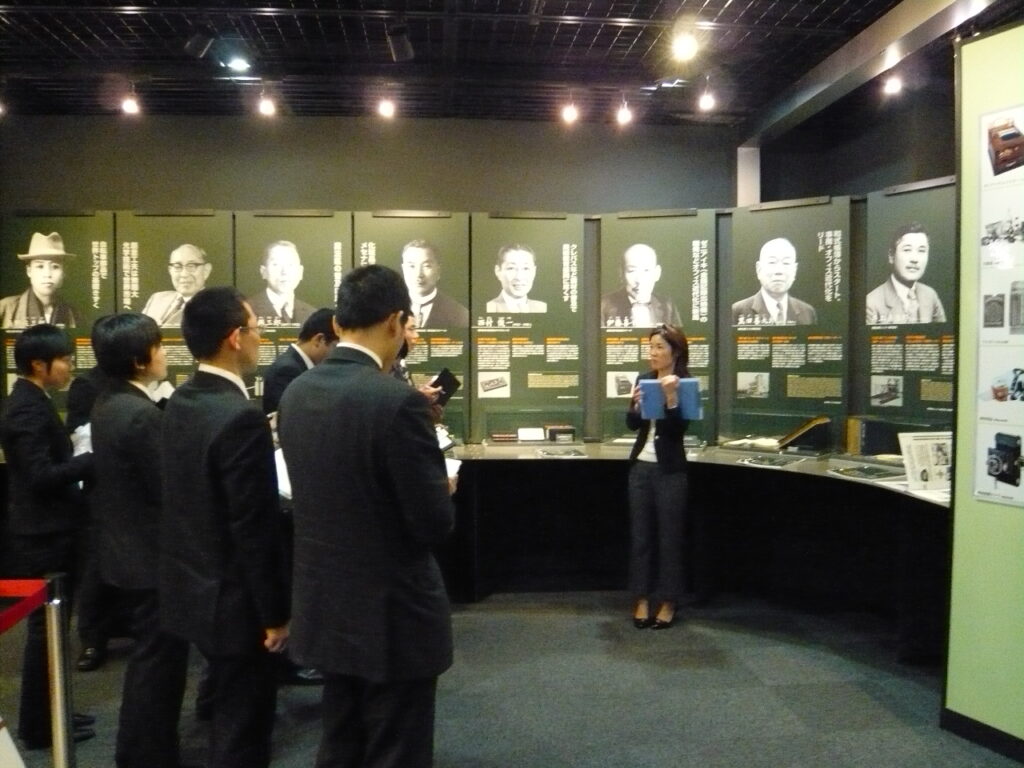
Explore Osaka through Entrepreneurs Who Contributed to World Expositions
Date|every other day
Chuo-ku, Osaka City
2024.12.26
The Expo 2025, Osaka, Kansai is set to take place on Yumeshima, a man-made island surrounded by the sea. Currently, construction is underway to install piers on Yumeshima, and once completed, the "Expo accessible by boat" will become a reality. What kind of scenery will unfold along the waterfront as seen from the boats? This time, we interviewed Ms. MATSUI Iyoko from the Aqua Metropolis Osaka Consortium, who is working to revitalize Osaka’s waterfront and water transportation.
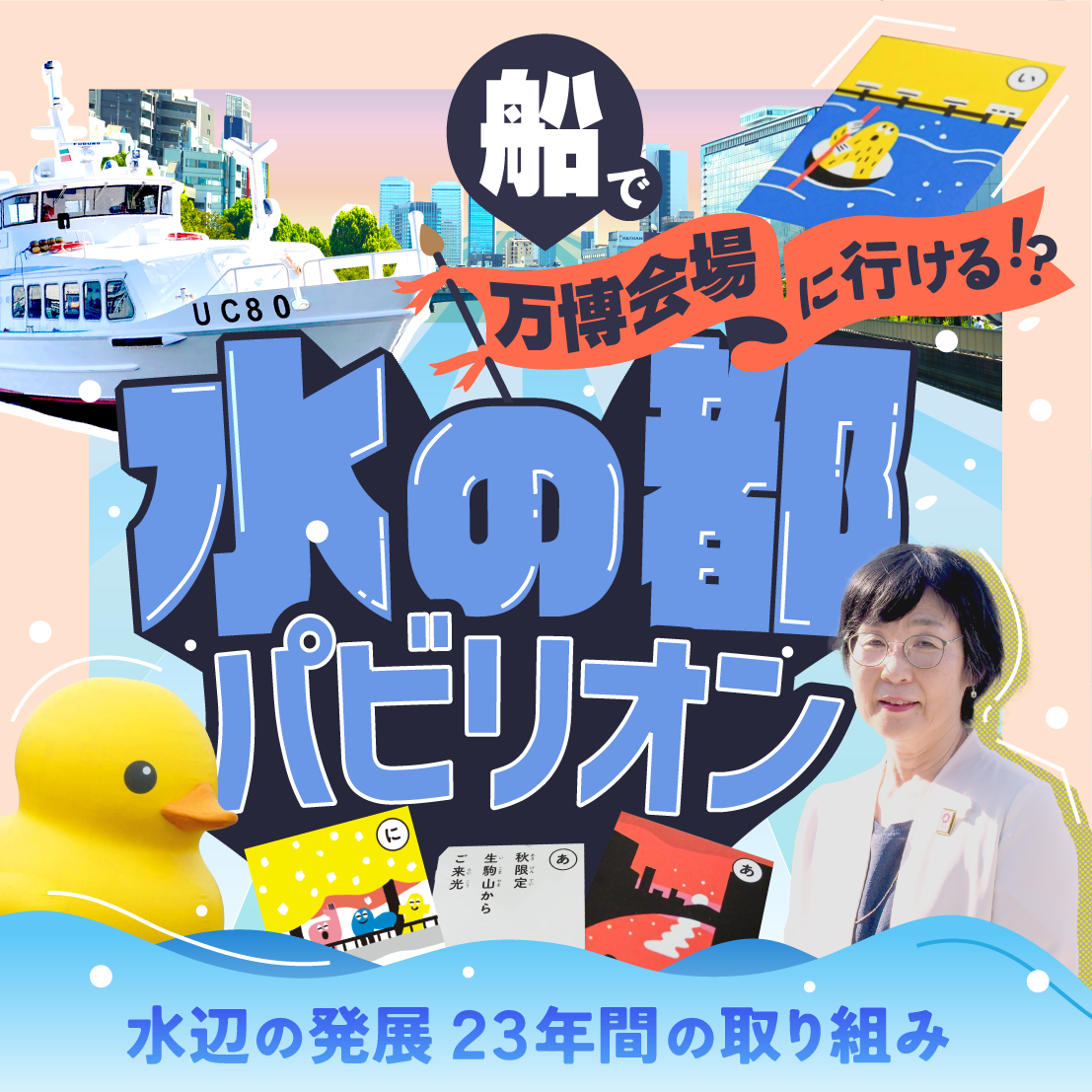
Project
People
Keyword

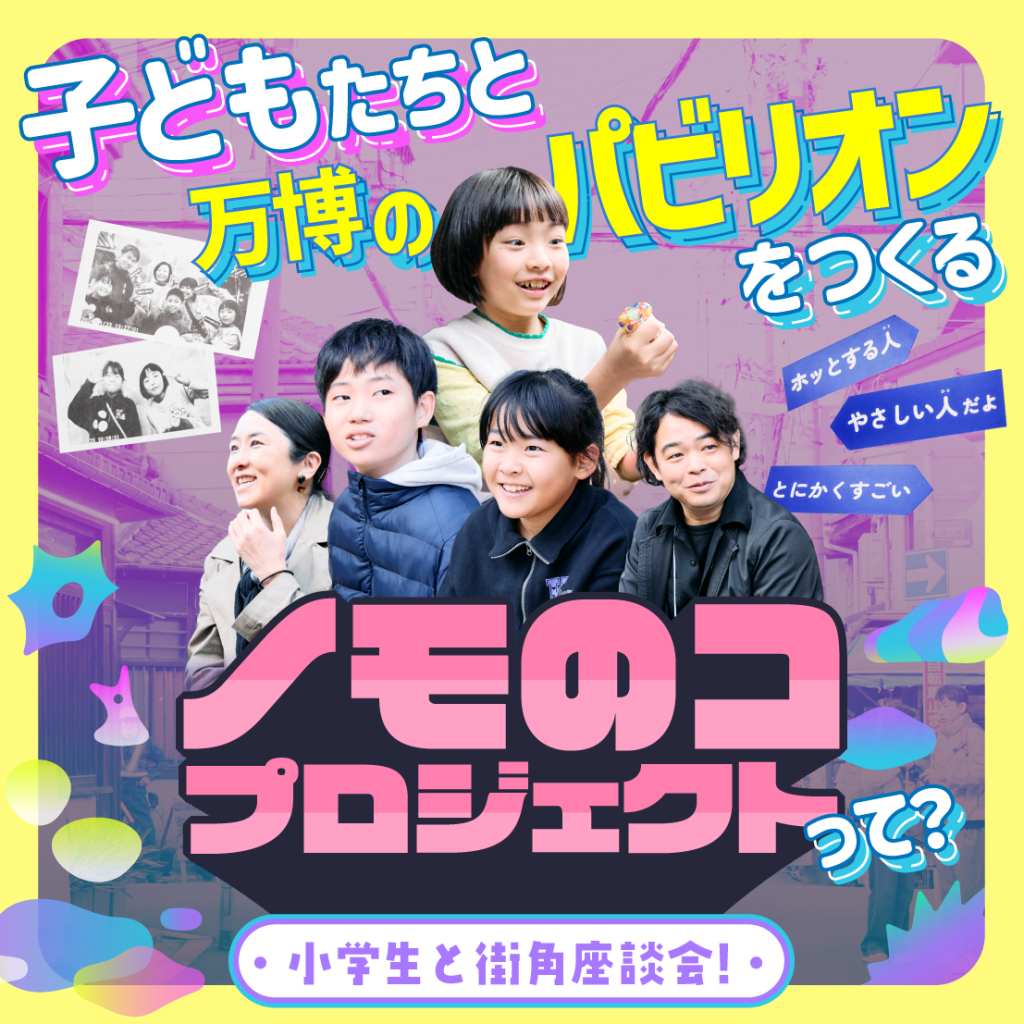

INDEX
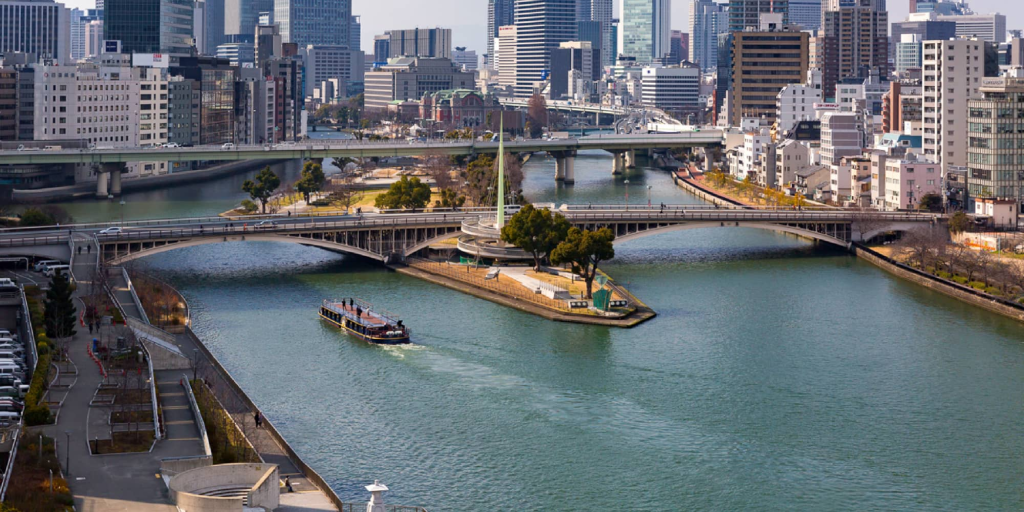
Do you know how many rivers flow through Osaka City? According to a survey by the River Division of the Osaka City Construction Bureau, there are a total of 33 rivers. Their combined length reaches an impressive 146.0 kilometers. As you can see, Osaka is a city where rivers flow through every corner of the urban landscape.
Osaka has thrived since ancient times, supported by water transportation, and was even called the “City of Water” during the Meiji era. However, as transportation shifted to land and air during the Taisho and Showa periods, and with water pollution worsening during the period of rapid economic growth, a significant gap emerged between the rivers and people’s daily lives.
Since the 1980s, momentum began to grow for the revival of the “Aqua Metropolis” that had become a distant memory. In 2001, the initiative for “Revitalizing Aqua Metropolis Osaka” was designated as a national urban regeneration project. Since then, various projects have been undertaken, including the development of waterfront symbolic spaces and docks, the illumination of embankments and bridges, and more.
With the Expo 2025 Osaka, Kansai as a catalyst, Osaka is now aiming to further expand the operation of sightseeing boats and planning water shows, striving to showcase its charm to both domestic and international audiences.
In this article, we interviewed Ms. MATSUI Iyoko, the Secretary-General of the “Aqua Metropolis Osaka Consortium,” which operates the “Aqua Metropolis Osaka” project. She shared insights into the charm of Osaka’s rivers, details about the events organized by the Aqua Metropolis Osaka Consortium, as well as its connection to the upcoming Expo and the future outlook for Aqua Metropolis Osaka.
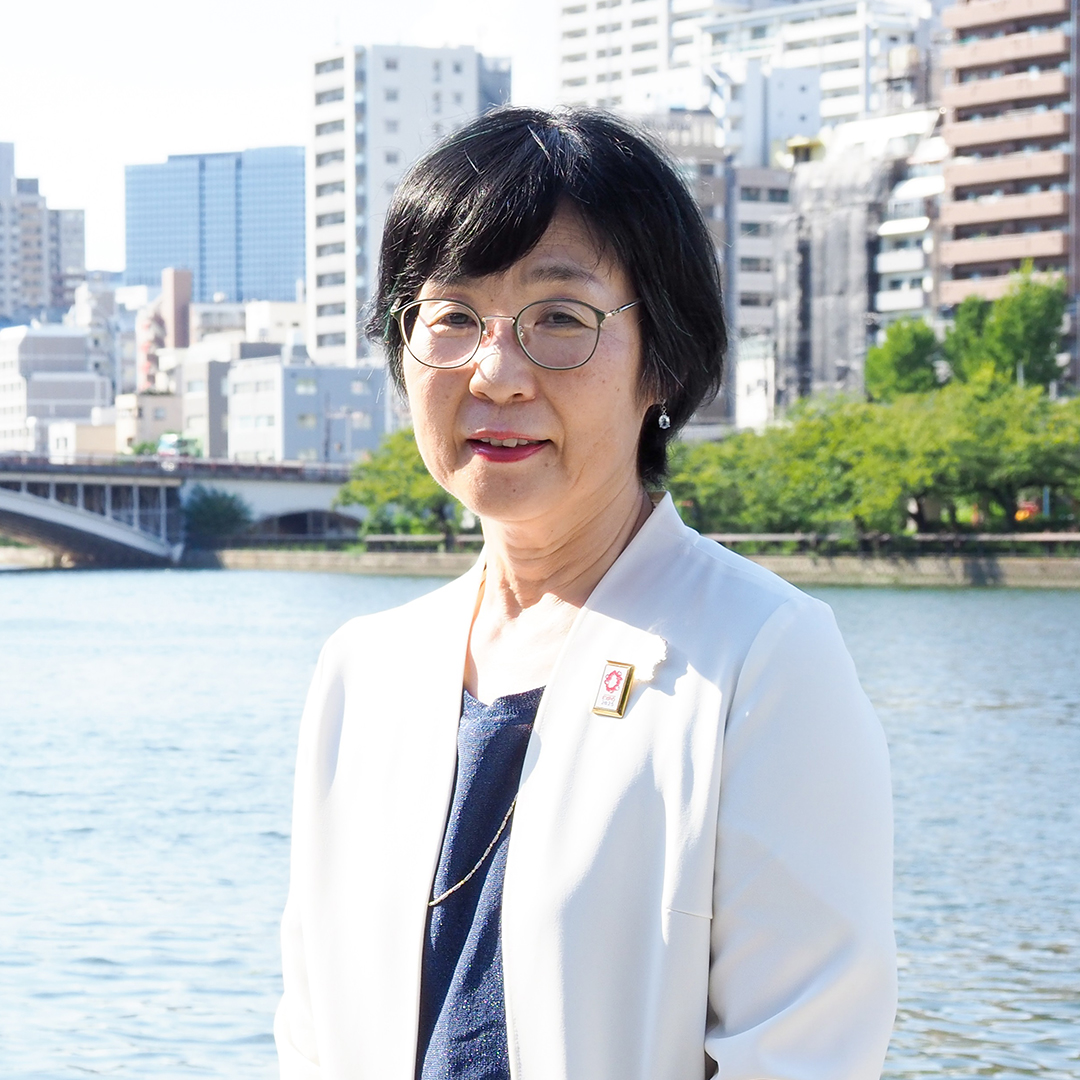
Executive Director, The Aqua Metropolis Osaka Consortium
MATSUI Iyoko
An employee of the Osaka Chamber of Commerce and Industry. After working in the areas of local commerce promotion, women’s empowerment, and information technology support for small and medium-sized enterprises, she has been in her current position since April 2021. She holds a second-class small ship pilot license, a Master of Commerce, and an MFA, and enjoys walking along the waterfront and visiting art museums. With the EXPO 2025 Osaka, Kansai, Japan to be held in Yumeshima as an opportunity, she is working with the members of the consortium, which consists of the public and private sectors, to create a more lively “water corridor,” which is rare in the world.

The “Aqua Metropolis Osaka Consortium” serves as a public-private partnership platform, working alongside Osaka Prefecture, Osaka City, the business community, the Osaka Convention & Tourism Bureau, water transportation organizations, academics, and other member organizations. Together, they aim to create vibrant waterfront spaces, revitalize water transportation, enhance the branding of Aqua Metropolis Osaka, and promote information dissemination.
One distinctive feature of the Aqua Metropolis Osaka Consortium, which began its activities in 2017, is the participation of organizations that bring together companies operating sightseeing boats.

Revitalizing water transportation is one of the major initiatives of Aqua Metropolis Osaka. For example, the consortium has organized events where live performances are held near multiple docks, and kitchen cars are set up, allowing participants to travel between the docks by boat. These efforts aim to create a lively and engaging waterfront experience.
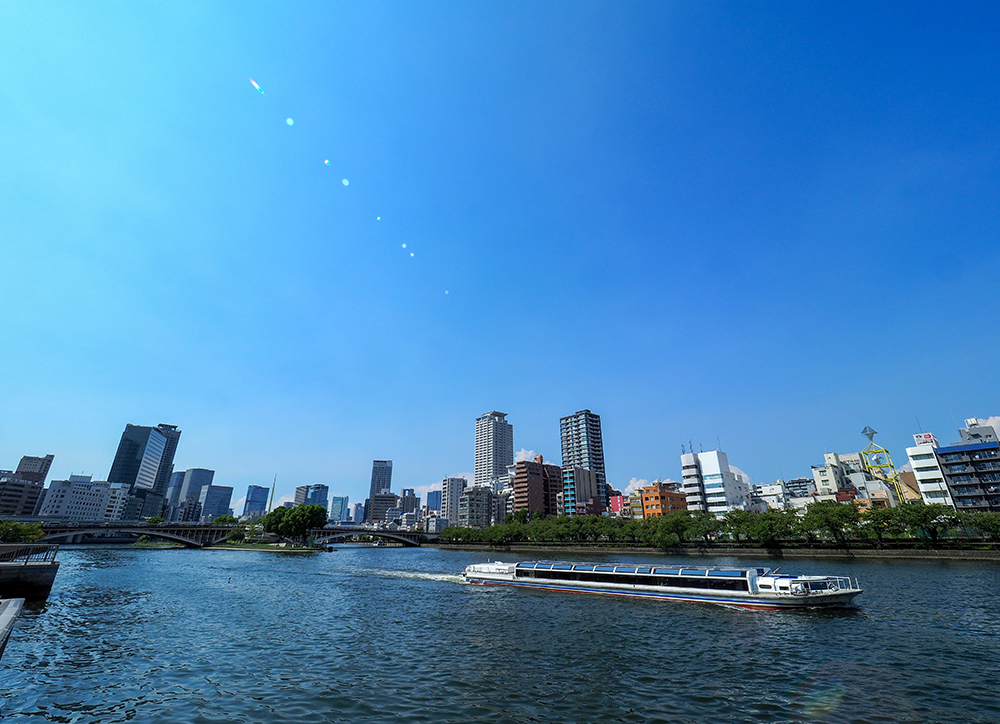
As Ms. MATSUI Iyoko mentioned, “boat excursions” are one of Osaka’s major attractions. Various passenger boats traverse the city’s rivers and seas, each offering a unique experience. These include the Aqua Liner, a water bus that tours the city center from Osaka Castle to Nakanoshima; the Santa Maria, a sightseeing boat in Osaka Port modeled after Columbus’s flagship but built at twice the scale; the Tonbori River Cruise, which passes under nine bridges along the Dotonbori River; and the gourmet boat Himawari, reminiscent of steamships from the Meiji era.
Recently, these boats have evolved even further, with some now powered by electricity.

First-time passengers are always amazed by the diverse scenery along the waterfront. Even locals living nearby often say things like, “I always jog around Nakanoshima, but I had no idea the view looks so different from the river!”
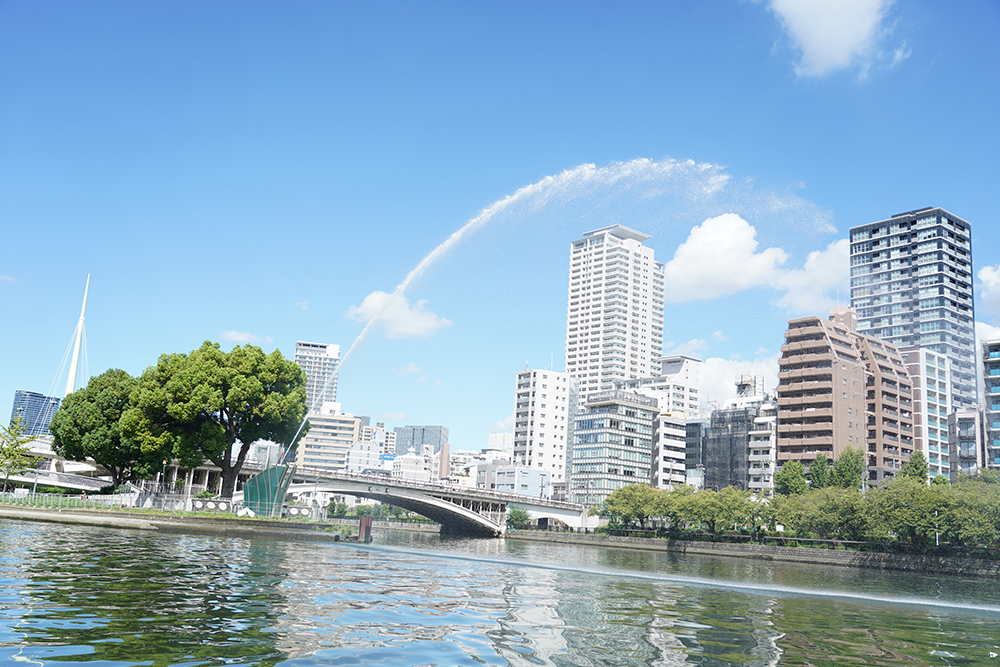
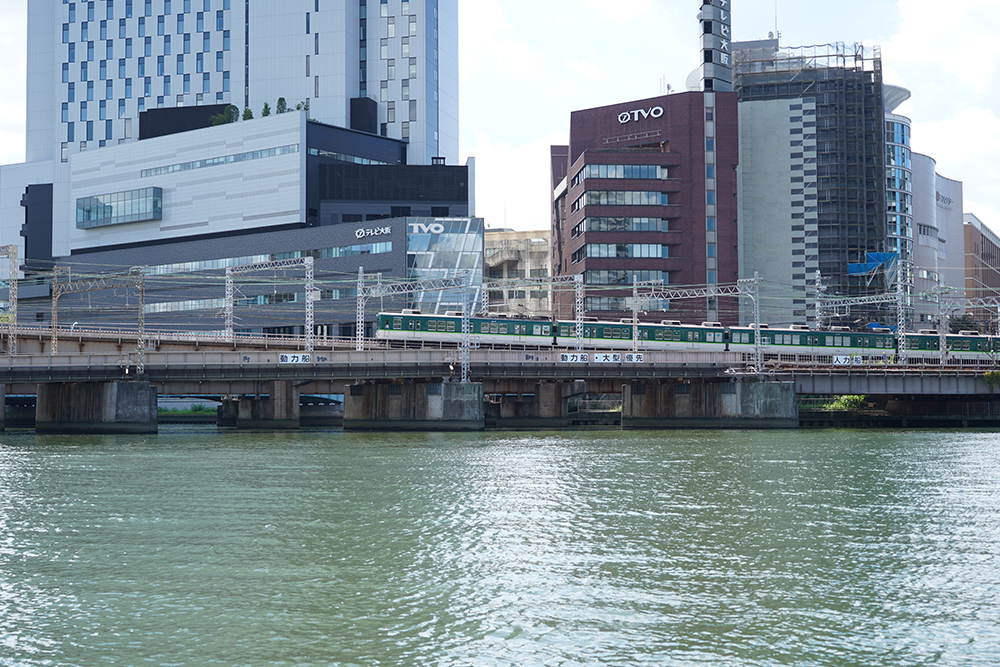
Among the many events organized by the Aqua Metropolis Osaka Consortium, one particularly eye-catching event is the “Tenmabashi Waterfront Mini Fireworks” held at the Hachikenyahama Dock. This event is held in collaboration with seasonal Aqua Metropolis Osaka Weeks and pre-Expo events, featuring approximately 300 fireworks launched per session.
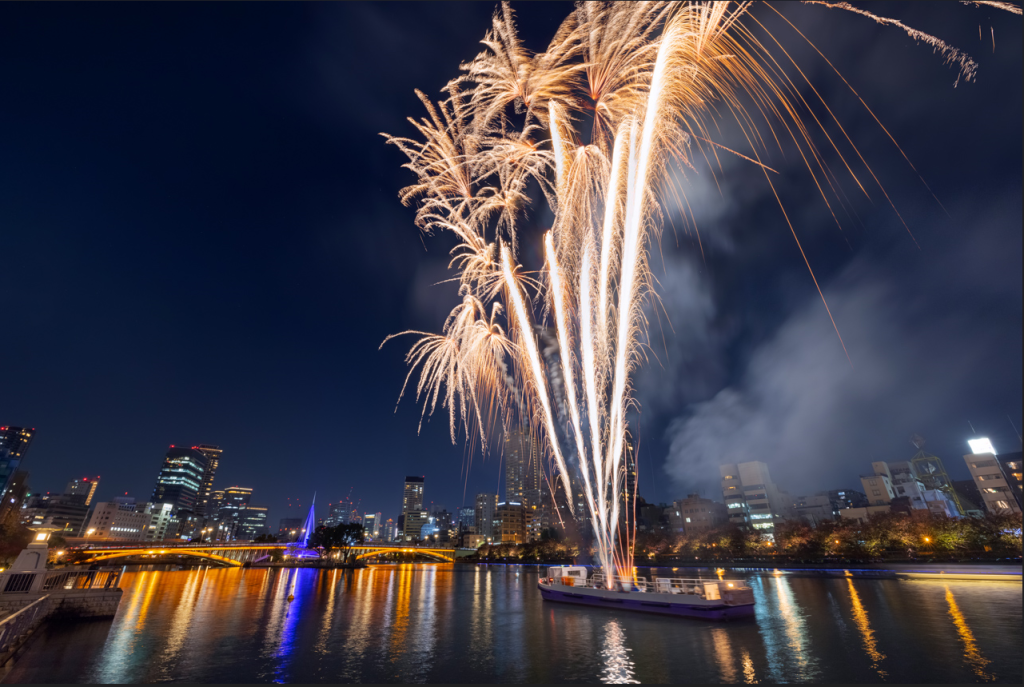

The boat companies are also running cruise tours for viewing the fireworks, adding to the excitement. We hope to establish a leisure style where visitors to Osaka can enjoy a meal at their hotel and then watch the fireworks from a boat. This year, we plan to hold the event five times.
Additionally, we are working to revitalize the rivers and waterfronts through various seasonal activities. In spring, we offer flower-viewing cruises for cherry blossoms and roses. In summer, we operate cooling boats with wind chimes hung under the bridges. In winter, we collaborate with illumination cruises and set up food stalls at the docks.
In November to December 2023, the “Winter Aqua Metropolis Osaka Week: Nakanoshima EAST Waterfront Promenade” held at Hachikenyahama, in collaboration with the “Osaka Festival of Lights,” attracted approximately 17,000 visitors. Similarly, the “Autumn Aqua Metropolis Osaka Week: Water City Pavilion,” held in October at Nakanoshima Park, Tenmabashi, and Hachikenyahama, welcomed around 13,000 visitors.

We want visitors to come to the waterfront and feel, “Wow, boats are so much fun!” or “I’d love to ride a boat myself,” while showcasing the charm of Osaka as an Aqua Metropolis.
▼Why Did Osaka Become the Aqua Metropolis? The Reason Lies in Hideyoshi’s Urban Development
Aqua Metropolis Osaka. One of the reasons Osaka came to be known as the “City of Water” lies in the urban development carried out by Toyotomi Hideyoshi. For example, the Higashi-Yokobori River, which flows north-south between present-day Kitahama and Tenmabashi, was actually dug by Hideyoshi as an outer moat during the construction of Osaka Castle. In this way, Hideyoshi laid out various waterways as he built the castle town.
During this period, merchants also competed to obtain permission to dig artificial rivers (horikawa). It’s hard to imagine now, but townspeople pooled their own money to dig rivers and build bridges.
As a result, the horikawa (canals) crisscrossing the city became bustling with boats carrying goods. These boats played a vital role in logistics, unloading cargo directly in front of warehouses and merchant houses, particularly in the Semba area. Even Osaka’s signature flavor of kombu dashi (kelp broth) owes its origins to the shipping routes established from the Seto Inland Sea, where kombu was produced.
Thanks to these waterways, Osaka became the nation’s leading hub of trade and earned the nickname “The Nation’s Kitchen.”
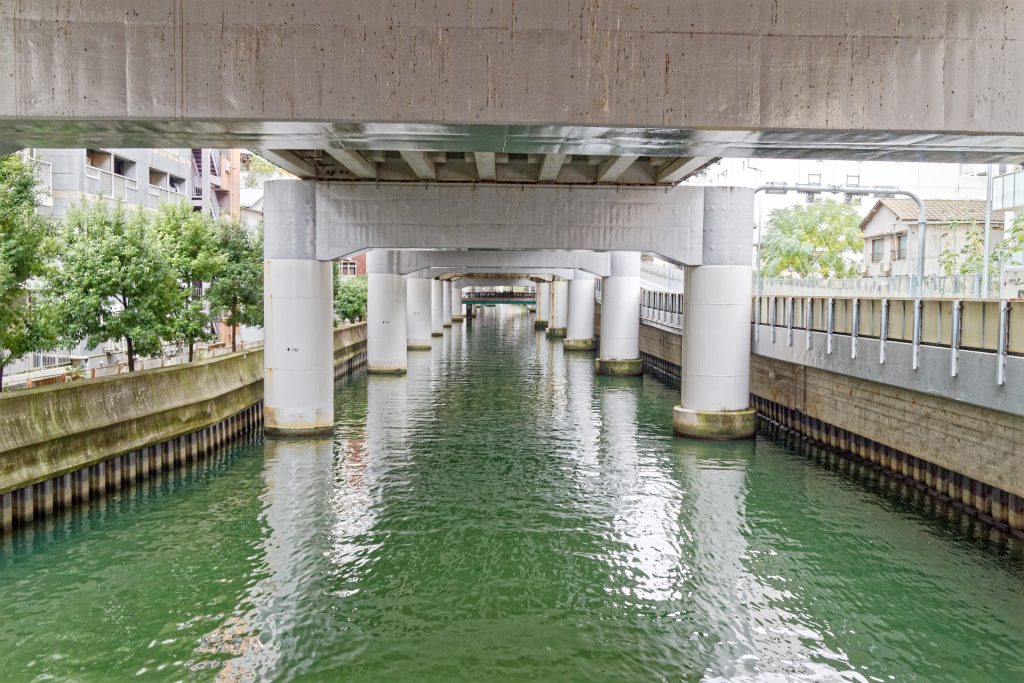
▼Aqua Metropolis Osaka Revives the “Water Corridor”
However, the state of Osaka’s rivers began to change significantly during the Taisho era.

Transportation shifted from boats to railways and automobiles, and gradually, the presence of the rivers began to fade from people’s minds. During World War II, rubble from buildings destroyed in air raids was disposed of by filling in the canals, leading to a reduction in waterways. By the period of rapid economic growth, pollution from wastewater became a major issue, and the rivers were largely neglected.
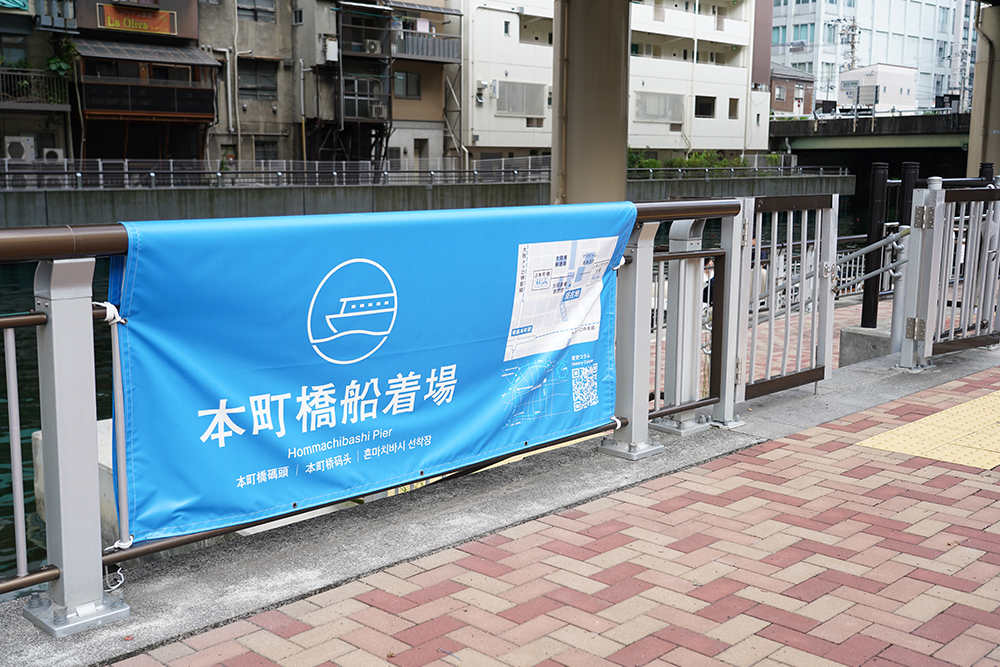
Although Osaka once flourished thanks to its rivers, there was a time after the war when people had forgotten the blessings of the waterways. However, starting around 1980, there was a renewed appreciation for the rivers and a growing movement to restore the brilliance of the era when Osaka was called the “City of Water.”
The turning point came in 2001, when the Japanese government designated Nakanoshima, a symbol of Aqua Metropolis Osaka, as an Urban Renaissance Emergency Development Area.

In an effort to revive Aqua Metropolis Osaka, which had once thrived on water transportation, the government began implementing various measures. These included installing floodgates, deploying cleaning boats to improve water quality to the point where fish like ayu (sweetfish) and eels could return, constructing docks, and maintaining river parks, promenades, and bridges. They also worked on illuminating embankments and other infrastructure improvements.

One of the most extensive infrastructure projects in Aqua Metropolis Osaka is the creation of the “Water Corridor.” Osaka is one of the rare cities in the world where rivers form a rectangular loop around the city center. This square-shaped network, formed by the Dojima River, Tosabori River, Kizu River, Dotonbori River, and Higashi-Yokobori River, is aptly named the “Water Corridor.” A full circuit by boat takes approximately 90 minutes.

Starting in the mid-2000s, a movement emerged to not only improve the physical infrastructure but also to create vibrancy through cultural and social initiatives. The turning point was the “Aqua Metropolis Osaka 2009” event. This citywide celebration centered around Nakanoshima Park and the Water Corridor, featuring activities such as art boats cruising the rivers, river markets at docks, and the Aqua Metropolis Art Corridor, which offered boat tours of modern architecture, rivers, and bridges.
This event also marked the debut of the iconic giant yellow rubber duck. Around this time, buildings that had previously turned their backs on the rivers began to be renovated with river-facing views in mind.
Through these efforts, Aqua Metropolis Osaka has contributed to creating and promoting the charm of the waterfront by focusing on both infrastructure (“hard”) and cultural vibrancy (“soft”).
▼A Rare Opportunity: An Expo Accessible by Boat
The venue for the 2025 Osaka Expo, Yumeshima, is a man-made island surrounded by the sea. Naturally, visitors will be able to reach the Expo site by boat. A World Expo accessible by boat is an extremely rare case on a global scale.
The system, where visitors transfer from riverboats to sea vessels on their way to the venue, will likely be a first-time experience for many and could become a once-in-a-lifetime memory. The Aqua Metropolis Osaka Consortium is actively supporting cruises that utilize these waterways.
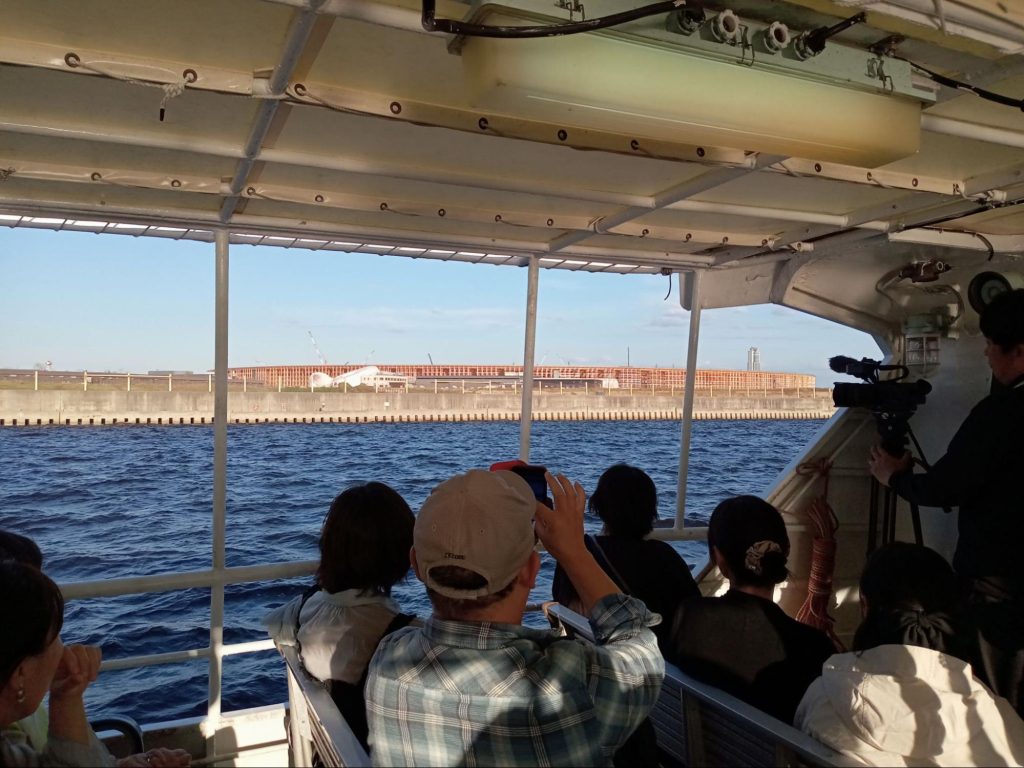

Yumeshima will feature two piers, allowing for boat access during the Expo. One of the key benefits of traveling to the Expo by boat is that the journey itself becomes a sightseeing experience. For example, visitors can transfer boats to reach Osaka Castle, where they can ride the Gozabune (a traditional-style boat) in the castle’s inner moat and get an up-close view of the stone walls.
Imagine enjoying delicious food in Osaka, the city of gastronomy, immersing yourself in its rich history, and then heading to the Expo venue by boat—what a wonderful experience!
Since the infrastructure for boat travel is already in place, we aim to support the development of unique travel itineraries that utilize these waterways. We also want to promote the idea that Osaka tourism can be experienced by boat, offering a distinctive and memorable way to explore the city.
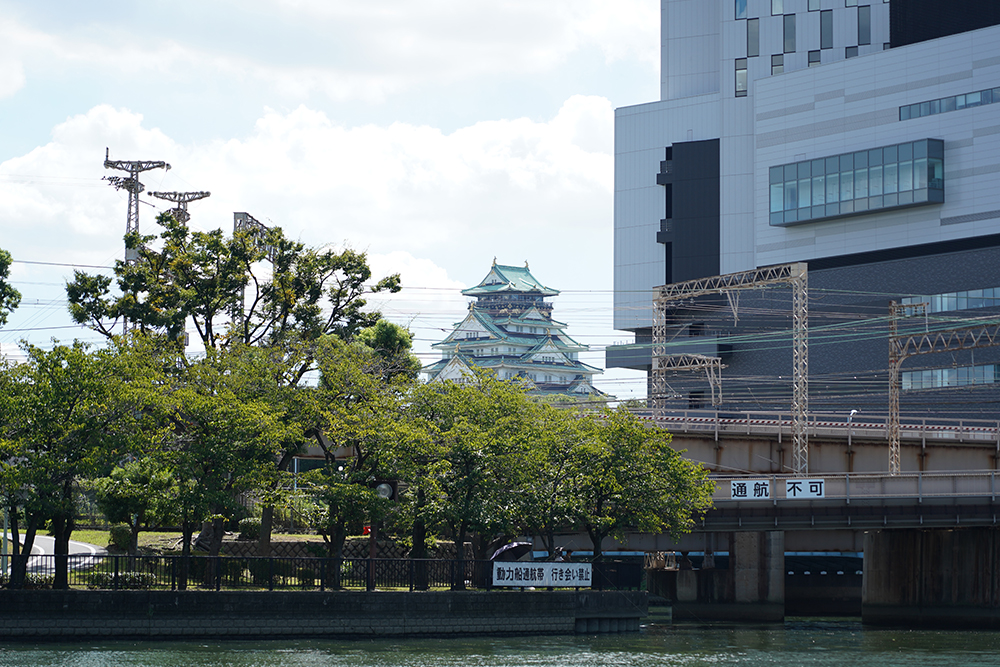
▼Collaborating with Private Operators to Revitalize the Waterfront
In preparation for the Expo 2025 Osaka, Kansai, a new hub called “Nakanoshima GATE Terminal” is currently under construction on the left bank of the Ajigawa River. This terminal will serve as a key transfer point between riverboats and sea vessels, connecting the Expo venue at Yumeshima, Osaka’s iconic Osaka Castle, and the bustling Minami district, including Shinsaibashi and Dotonbori. The terminal is envisioned as a waterfront hub providing boat access to Osaka’s central tourist destinations.
To prepare for this upcoming boat-based transportation system, the Aqua Metropolis Osaka Consortium has already conducted special route social experiment tours. The Osaka Expo offers a unique opportunity to rediscover the city from the perspective of its rivers, revealing new aspects of Osaka that may have gone unnoticed.
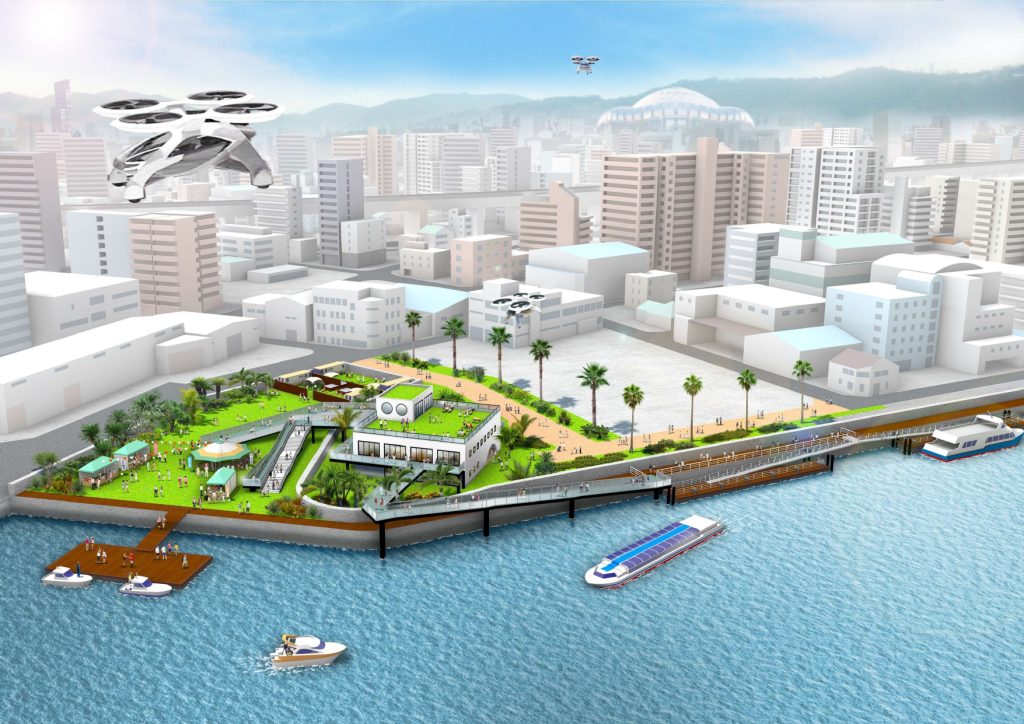

In mid-October, six months before the Expo’s opening, a special route social experiment tour was held on October 12–13, with approximately 480 participants. The course involved transferring boats within Osaka City to tour Yumeshima, offering onboard entertainment for passengers to enjoy during the journey.
During the Yumeshima cruise, participants were able to view the Expo venue under construction from the sea. Additionally, efforts were made to enhance the experience before boarding and after disembarking, such as collaborating with waterfront facilities like restaurants, hotels, museums, and art galleries, as well as alternative boat routes. Feedback from participants is being used to refine these offerings.
The consortium is experimenting with various ideas, such as creating onboard entertainment content, developing maps, and enabling QR code access to videos of tourist spots. By continuously testing and improving these initiatives, the consortium aims to provide feedback to boat operators and travel agencies, ultimately cultivating engaging Aqua Metropolis content for the Expo and beyond.
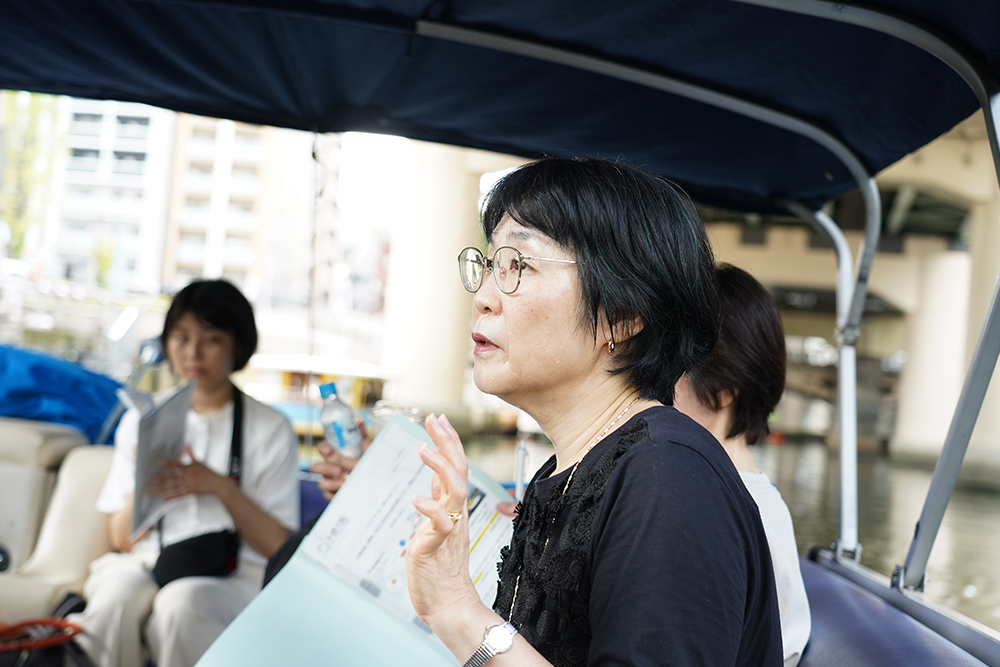
As the interview was wrapping up, Ms. MATSUI showed us a special creation: the “Aqua Metropolis Osaka Karuta.” This charming card game encapsulates the essence of Osaka’s rivers and waterfront, offering a playful yet educational way to connect people to the city’s rich aquatic heritage.
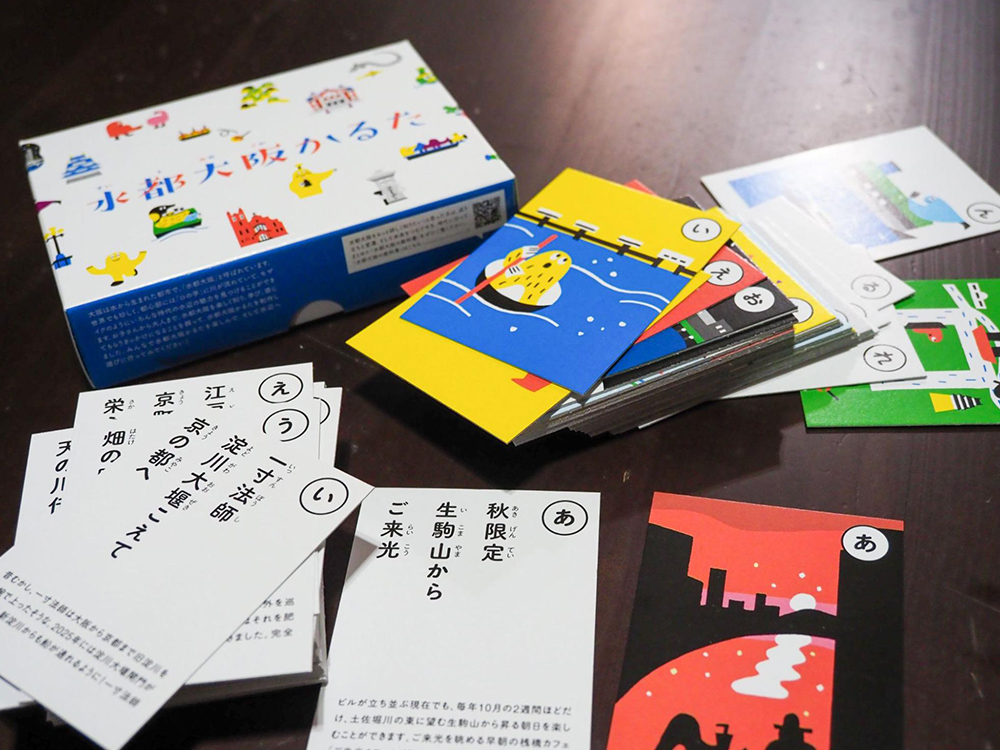
A: Autumn Exclusive – Sunrise from Mount Ikoma
Ko: Kombu Dashi – Delivered by the Kitamaebune Ships
To: Dotonbori River – Boats Dock at Theaters
Each card poetically captures the relationship between Osaka and its rivers.

One of the guiding principles of the Aqua Metropolis Osaka Consortium is fostering “civic pride”—a sense of pride, affection, and commitment to one’s community or municipality. The karuta cards were created as a way to teach children that “Osaka is a city of water” and to instill a sense of pride in them. Even if they don’t understand the meaning of the words at first, they can gradually learn by playing the game, and perhaps as adults, they’ll revisit the meanings. That slow, natural process is perfectly fine.
Each reading card includes explanations related to the rivers, making it an educational experience. For instance, did you know that the Dotonbori River was originally dug to improve the flow of the Higashi-Yokobori River? (Interestingly, the prominence of the two rivers has since reversed.) This makes the karuta enjoyable not only for children but also for adults, deepening their affection for Osaka’s rivers.

One of the key missions of the Aqua Metropolis Osaka Consortium is to create “fans of the waterfront.” With the Expo approaching, the consortium is working to share information that reaches inbound visitors while also ensuring it resonates with locals who may have never experienced a boat ride in their own city.
When traveling, people often think, “Oh, there’s a boat—I should try it!” But surprisingly, many don’t take advantage of boats in their own city. That’s why the consortium is committed to grassroots efforts to spread the message: “Give it a try—it’s fun! The scenery looks completely different from the water.”
In Osaka’s waterfront areas, it’s common for people on boats and those on land to wave at each other. The consortium hopes to expand this heartwarming custom even further.

Osaka’s city emblem, “Mio-tsukushi,” is a design inspired by markers placed in river shallows to guide boats safely. Since ancient times, Osaka has been closely tied to the flow of water.
The boats heading to the Osaka Expo are not just navigating the waters of Osaka—they symbolize the future course for Japan and the world. The many activities born from Aqua Metropolis Osaka serve as markers for the paths we should take and as guides leading the way for the world.
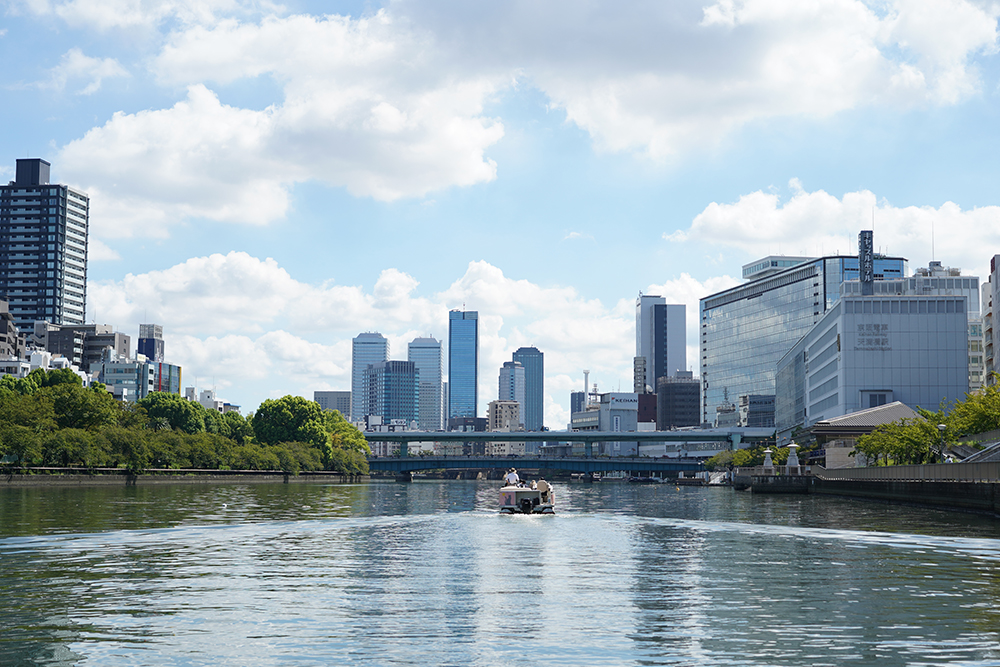
Interview & Text: YOSHIMURA Tomoki
Photography: HAMADA Mika
Planning & Editing: Ningen Editorial Team